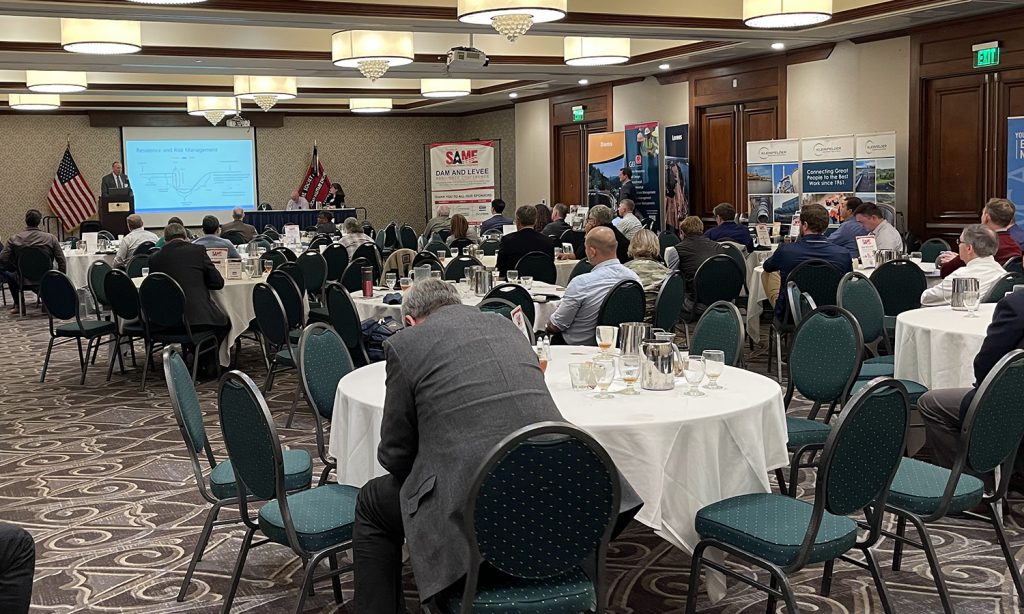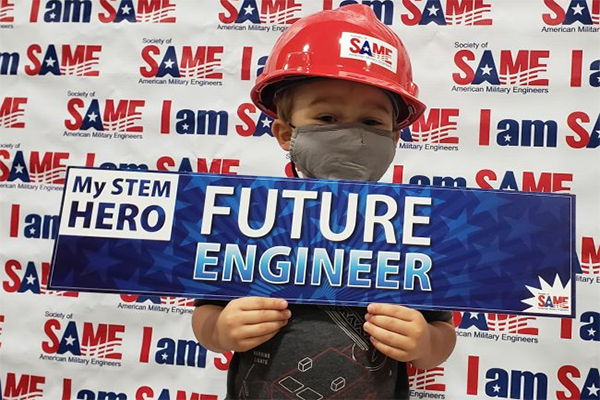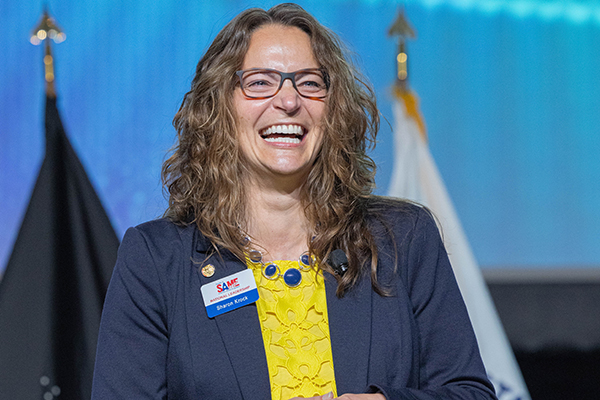As extreme weather events continue to increase in frequency and severity, ensuring that local communities remain resilient is critical. Among other efforts, the Society has supported this national security imperative its programs and events, such as a recent webinar and lecture series addressing the resiliency of dams and levees that brought together collaborators from industry and federal, state, and local government agencies.
This lecture series, initiated through the San Francisco Post, fostered conversations surrounding the risks and challenges facing America’s aging infrastructure. SAME sat down with JR Gregory, the organizer of the series, to talk about the program, his approach to gaining engagement with stakeholders, and advice for other Posts looking to develop similar collaborations.

SAME: Can you provide a brief overview of the Dam and Levee Resilience Lecture Series?
Gregory: The Dam and Levee Resilience Lecture Series is a program that was developed to examine the resilience of dams and levees as a whole. In 2022, we held three webinars. The first featured federal speakers including from the U.S. Army Corps of Engineers, Bureau of Reclamation, Department of Homeland Security, and Federal Emergency Management Agency. We then focused on local government for the second seminar and concluded the webinars with private industry.
In March 2023, we hosted an in-person conference that drew more than 100 attendees to promote the need for cross-sector collaboration in addressing dam and levee risks, challenges, policy updates, and mitigation needs. This event also featured a visit to the Whittier Narrows Dam, outside Los Angeles.
The landscape for how we deal with the risk to critical infrastructure is changing. Our program discussed this while also considering regional needs. Topics presented during the lecture series have highlighted successful projects utilizing unique and creative solutions that expanded beyond our traditional mindset for risk mitigation. Some sessions explained how the risk landscape is changing because of earthquakes, climate change, drought, and the threat of atmospheric rivers. To round it out, we discussed how to build public awareness of the risk and how that information gets communicated to the public.
These programs looked at the problems and offered solutions for how we move forward. The sessions were delivered by subject matter experts and national leaders in the dam and levee industry and supported by industry and government.
SAME: How do you see this lecture series helping build and sustain resilient communities?
Gregory: Resilience means the ability to withstand or recover quickly from an event. The ability to do so relies on a strong understanding of what those risks are so that we may have the best path established ahead of a disaster to minimize recovery time. The challenge in such a scenario is allowing for rapid, effective, and sustainable recovery. We combat these challenges by having intelligent conversations at the forefront that discuss what those risks are, by planning for the challenges we may face, and by putting plans for mitigation in place ahead of a disaster.
A resilient community is one that assesses its risks regularly and deploys effective mitigation measures before the disaster but also understands that we cannot continue to build in ways that are ineffective. The Dam and Levee Resilience Lecture Series highlights needs, challenges, industry best practices, and potential solutions to help address those challenges.
SAME: What have been the keys to engaging with federal, state, and local agencies in assembling the series?
Gregory: We began by reaching out internally within SAME, engaging subject matter experts, and by sending a cold email to government and industry leaders. Finding distinguished subject matter experts in the industry was key. Patience, perseverance, and a clearly defined program are key to getting experts to volunteer their time to speak at this conference.
Additionally, the SAME steering committee that was assembled comprised subject matter experts, and it was a big part of the success in finding speakers, especially when last-minute cancelations occur. Our steering committee proved to be resilient when faced with such challenges.
SAME: What kind of challenges did you encounter in producing this program, and how did you address them?
Gregory: The biggest challenge was getting enough volunteers to help organize and execute the program. We solved this by maintaining an open-door policy at our steering committee meetings and allowing members to participate as their schedule permitted. We forged partnerships with several SAME Posts on the West Coast, including Los Angeles, Sacramento, and Seattle, and with the Resilience COI.
We also forged partnerships with other professional organizations like the United States Society on Dams and the Association of State Dam Safety Officials to help market the event.
SAME: How have you leveraged the benefits of the virtual webinar format in your lecture series?
Gregory: The virtual webinar format was critical for getting us started. It allowed us to pull in speakers from all over the country without the associated complications with travel, venue, food, and time away from the office.
The webinars also allowed us to begin developing a base audience (and nationwide interest) to market the in-person conference, before complicating the program with expenses.
SAME: What advice or lessons learned can you share?
Gregory: Start early and seek support from others within SAME and other external organizations. There really are a lot of subject matter experts across the Society, and we all share a common professional goal to increase resilience. Form partnerships and leverage the vast network that SAME has across the industry.
Putting together such programs takes a lot of work, and it takes teamwork to pull off such a multi-speaker, multi-day event. Patience, persistence, and passion are necessary!

Spotlight on Our Members
SAME’s multidisciplined membership spans the uniformed government, government civilian, private industry, academia, nonprofit, and student sectors. Through our uniquely joint environment, Society members collaborate and drive solutions for some of the toughest engineering challenges facing the A/E/C industry and our national security. Learn more about the benefits of SAME membership.
-

Voting Deadline is April 15 for the 2025 SAME National Election
The 2025 SAME Board of Direction national election will end April 15. This year’s voting includes candidates for President-Elect, Vice President, and Elected Director. -

SAME Career Center Provides Access to Over 29,000 Open Jobs
For job seekers looking for work in the Construction, Architecture or Engineering fields, the SAME Career Center is truly a one-stop-shop, with over 29,000 open jobs to browse. -

2025 SAME National Election: March 1 to April 15
The 2025 SAME Board of Direction national election will run from March 1–April 15. This year’s voting includes candidates for President-Elect, Vice President, and Elected Director. -

Join SAME As We Celebrate E-Week 2025!
Join SAME as we celebrate E-Week in recognition of engineers, and showcasing how our own SAME members in the A/E/C industry drive innovation and progress. -

Sharin’ the Value! An Interview With SAME President Sharon Krock
TME interviewed SAME National President Sharon Krock about her personal journey within SAME, her instrumental role in the development of the 2030 SAME Strategic Plan, and how she sees the Society embracing her catchphrase of Sharin’ the Value.
